
Drone Inspection Guide: How UAV Inspection Is Used Today
Drone Inspection Guide: How UAV Inspection Is Used Today Drone inspection technology is now widely used across industries where routine
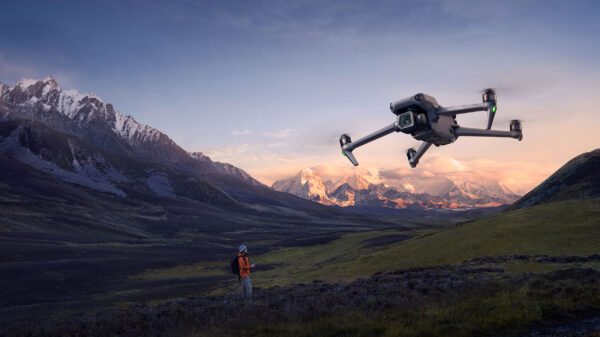
Drones have changed the way we see the world. They help us capture amazing aerial pictures and perform important tasks like surveillance. They offer new opportunities that we couldn’t reach before.
However, with great power comes great responsibility, especially when flying drones. Knowing the rules and the physical limits of how high drones can fly is very important.
This article explains the height limits for drone flights and provides a simple guide on how high drones can fly. As drone owners, we often wonder how high you can fly a drone to get the most from it. Drones come in different shapes and sizes, making it tricky to know their exact flying height. The answer depends on your drone’s capabilities, but it’s also important to understand the legal limits for flying your drone.
For example, in the UK, a drone can fly up to 400 feet. If a drone pilot wants to go above 400 feet, they need special permission from the Civil Aviation Authority (CAA). With this permission, drones can go as high as 33,000 feet legally.
Before you launch your drone, you need to know how high does a drone fly within the law. In countries like the United States and many others, the law limits drone flights to 400 feet above the ground. While drones could reach altitudes of up to 10 kilometers (33,000 feet), things like battery life and the connection between the drone and the controller affect how high you can actually fly your drone.
In the UAE, for example, you can legally fly a drone up to 400 feet (120 meters). Always keep your drone within your sight, and avoid flying near airports, heliports, or restricted zones. Following these rules ensures safe and responsible drone use.
Curious to learn more? Let’s dive deeper into the world of drone altitude. This article will explore different rules for highest altitude for drones, regional differences, and the highest flying drones available today.
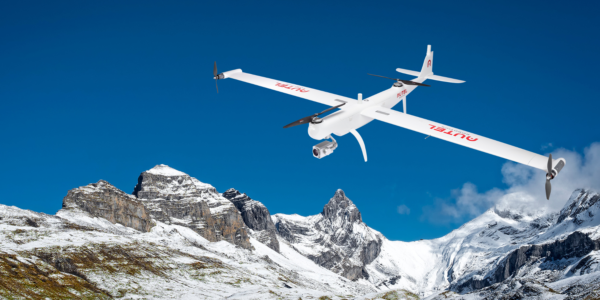
Drones have changed the world of aerial photography, surveillance, and fun flying. But, there are rules about how high a drone can fly to keep the skies safe. In many countries, including the United States, drones can only fly up to 400 feet above ground level (AGL). This limit is set by aviation authorities like the Federal Aviation Administration (FAA) in the U.S. to avoid conflicts with manned aircraft, which typically fly above 500 feet.
While the 400-foot rule is common, there are some exceptions. For example, commercial drone pilots with an FAA Part 107 license can fly above 400 feet if they are within 400 feet of a building. This is for jobs like inspecting towers. However, getting permission to fly higher than 400 feet requires lots of paperwork, and it can take up to 90 days to get approved.
While the UK uses the 400-foot limit, some countries have different rules. Germany, for example, has a 230-foot limit. Spain allows drones to fly up to 384 feet, and France lets drones reach up to 492 feet. Italy, Japan, Mexico, Poland, and Russia also set their limits around 400 feet.
Countries like Turkey, Panama, South Africa, The Netherlands, India, China, Canada, Brazil, America, Australia, and Argentina all follow the 400-foot height rule.
Indonesia has the highest limit, allowing drones to fly up to 500 feet. However, Germany and Spain have stricter rules, with limits under 400 feet. If you’re flying a drone in these countries, it’s important to check the local rules with local authorities to make sure you follow them.
In the UAE, drones can fly up to 400 feet (120 meters). Always keep your drone in sight, and avoid flying near airports, heliports, or restricted areas. Following these rules helps ensure that you fly safely and responsibly.
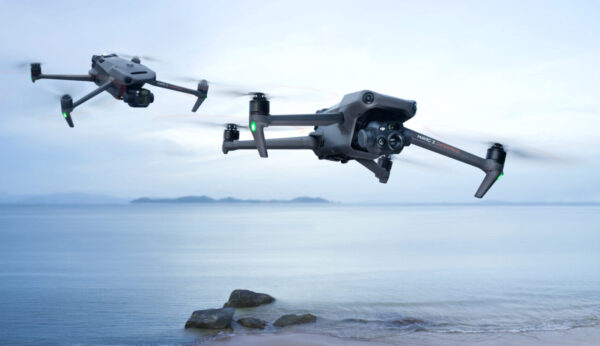
Drones are subject to different altitude limits around the world. These rules are in place to keep drones from interfering with manned aircraft and to maintain air safety. While most countries have similar altitude limits, some have unique regulations based on their own airspace needs.
A common rule is to keep drone flights below 400 feet (about 120 meters) to avoid conflicts with planes and helicopters. However, different countries have their own rules for how high drones can fly. Here’s a quick look at the maximum drone flight heights in different countries:
| Continent | Country | Maximum Altitude |
|---|---|---|
| Europe | France | 492 feet (150 meters) |
| Europe | Germany | 230 feet (70 meters) for recreational; 492 feet (150 meters) for commercial |
| Europe | Italy | 230 feet (70 meters) for recreational; 492 feet (150 meters) for commercial |
| Europe | Netherlands | 394 feet (120 meters) |
| Europe | Poland | 492 feet (150 meters) |
| Europe | Russia | 492 feet (150 meters) |
| Europe | Spain | 384 feet (120 meters) |
| Europe | Ukraine | 400 feet (122 meters) |
| Europe | United Kingdom | 400 feet (122 meters) |
| Middle East | UAE | 400 feet (122 meters) |
| Asia | China | 400 feet (122 meters) |
| Asia | India | 400 feet (122 meters) |
| Asia | Indonesia | 500 feet (150 meters) |
| Asia | Israel | 400 feet (122 meters) |
| Asia | Japan | 492 feet (150 meters) |
| Asia | Pakistan | 400 feet (122 meters) |
| Asia | Singapore | 200 feet (61 meters) |
| Asia | South Korea | 492 feet (150 meters) |
| Asia | Thailand | 300 feet (91 meters) |
| Asia | Turkey | 400 feet (122 meters) |
| North America | Canada | 400 feet (122 meters) |
| North America | Mexico | 400 feet (122 meters) |
| North America | Panama | 400 feet (122 meters) |
| North America | United States | 400 feet (122 meters) |
| South America | Argentina | 400 feet (122 meters) |
| South America | Brazil | 400 feet (122 meters) |
| South America | Chile | 400 feet (122 meters) |
| Africa | South Africa | 400 feet (122 meters) |
| Oceania | Australia | 400 feet (122 meters) |
It’s important for drone pilots to know the rules in the country where they plan to fly. Following the how high can drones fly guidelines helps keep everyone safe and avoids legal issues. Keep in mind, these height limits can change, and they may be different depending on the area or special conditions. Always stay up to date with the latest drone flight rules to make sure you’re flying safely and legally.
It is important to remember that many drones cannot fly higher than 400 feet. Only professional-grade drones, with special permissions, can reach that height. Most regular drones are limited to 400 feet because of their design and technical abilities.
If you fly a drone higher than 400 feet without permission, you could face legal problems. Fines and penalties are common, and in some cases, if the drone creates a safety hazard, there may be serious legal consequences. It is strongly recommended that all drone pilots stick to the 400-foot limit unless they have permission to fly higher.
Flying a drone above 400 feet can result in serious consequences. The FAA enforces these rules to keep the airspace safe and avoid any conflicts between drones and other aircraft. If you’re caught flying above the legal limit without the proper authorization, you may face fines, penalties, or even legal action. Always follow the regulations and fly responsibly to avoid trouble.
When it comes to flying a drone at night, the FAA has the same altitude rule as during the day — 400 feet. But there’s more to it. For safety reasons, drones flying at night must have anti-collision lights. These lights must be visible from at least three miles away. These lights help other pilots or people see your drone and keep a safe distance.
If you’re a commercial drone pilot flying at night, you need special waivers or permission from the FAA. This is to make sure you understand the safety rules and procedures for flying at night. So, when flying after dark, remember to keep your drone under 400 feet, use the required lights, and always follow safety rules for a smooth and safe flight.
In the UAE, flying drones at night is usually not allowed for hobbyists. Drone flights are generally restricted to daylight hours to ensure safety and visibility. However, commercial drone operators may get specific permissions. It’s best to check with the General Civil Aviation Authority (GCAA) to see if there are any exceptions or additional requirements for night flying. Always make sure to follow local rules for safe and legal drone use.
The restriction to not fly drones above 400 feet is in place for several important reasons, even though drones can technically fly much higher. Here’s why it’s essential to stay within this limit:
The primary reason for the 400-foot limit is to ensure safety. Above 400 feet, drones may interfere with manned aircraft like airplanes and helicopters. These aircraft often fly at altitudes between 500 and 1,000 feet. By keeping drones below 400 feet, drone operators help avoid potential collisions, ensuring safer skies for everyone.
Airspace is regulated to avoid chaos. Air traffic controllers manage the flow of planes and helicopters to keep a safe distance between them. Drones flying above 400 feet might not be visible to air traffic control systems, making it harder to track and potentially causing accidents with manned aircraft.
In certain areas, airspace is reserved for planes and helicopters. By limiting drone flights to 400 feet, regulations help prevent drones from straying into controlled or restricted airspace, such as near airports or military zones, where flying is prohibited.
While drones might be capable of reaching higher altitudes, their battery life and communication systems often struggle at extreme heights. The higher a drone flies, the harder it becomes for the pilot to maintain control or get the drone back safely. Drones are designed to work optimally at lower altitudes, ensuring better safety and battery performance.
Another key reason for the 400-foot limit is ensuring the drone operator can keep the drone in sight. Drones are small, and it’s easy to lose sight of them, especially when they fly too high. Keeping drones below 400 feet helps operators maintain control and avoid accidents by ensuring they can see their drone and react to any potential hazards.
Flying drones at very high altitudes can disrupt wildlife, especially in areas like national parks or nature reserves. Birds and other animals may be affected by drones flying too close or at high altitudes, leading to stress or even displacement. By following the 400-foot limit, drone operators help minimize disturbances to natural habitats and protect wildlife from unnecessary harm.
If drone operators exceed the 400-foot limit without permission, they may face serious legal consequences. This includes fines, penalties, and potentially losing their drone flying privileges. In some cases, flying above the limit could even result in the confiscation of the drone. To avoid these legal issues and keep drone flying safe, it’s essential to always respect the altitude limit.
In USA for recreational drone pilots, there have been important changes brought about by the FAA Reauthorization Act of 2018. Before this, drone guidelines were not as strictly followed, but now it’s mandatory to comply with the rules. According to the regulations, recreational drone flights must stay under 400 feet in uncontrolled airspace. However, in controlled airspace, there’s a blanket restriction on flying, and no exceptions can be made to fly higher than 400 feet. While there is a way to ask for permission to fly in controlled airspace, the 400-foot rule must still be followed by recreational pilots, and no waivers are allowed.
Commercial drone pilots, who are licensed under Part 107, have more flexibility. They can fly their drones above 400 feet if they are flying within 400 feet of a structure. This rule was set up to allow commercial operations like tower inspections or checking industrial equipment. The reason behind this is that manned aircraft will keep enough distance from these structures, so drones can fly higher safely. But it’s important for commercial drone pilots to have the proper skills and experience to operate safely at those higher altitudes.
Remember, the 400-foot rule refers to the altitude above the ground level, not the drone’s altimeter reading. For instance, if you take off from a building that is 100 feet high, you still need to follow the 400-foot rule above the ground level. In this case, you can only gain an extra 300 feet from the place where you took off. So, you need to be aware of the exact rules regarding how high you can fly a drone and follow them strictly.
Here’s a quick summary of the rules for recreational and professional drone pilots in the UAE:
These rules are designed to ensure safe drone operations while encouraging growth in the drone industry. If you have any questions about how high drones can fly, feel free to ask!
Different Types of Drones
Different drones can fly at different heights depending on their design and purpose. Let’s take a look at how high drones can fly based on their types, focusing only on the technical abilities of each drone.
While small, toy drones can still reach impressive heights. Typically, toy drones can fly up to 100 to 150 feet. This is because they are small in size and have less powerful motors. These drones are meant for fun and are often used in backyards or parks where lower altitudes are safer. They may not fly as high as other drones, but they are perfect for beginners and casual users.
Racing drones are built to be fast and agile. They are designed for short, high-speed flights, usually within 100 to 200 feet. This lower flying height allows racers to have full control over their drone while zooming through tight spaces at high speeds. Racing drones focus on speed and maneuverability, not altitude.
Consumer drones are designed for everyday users, and they can fly much higher than toy or racing drones. On average, they can fly up to 1,000 feet, but most are limited to 400 feet due to legal restrictions. This height range allows for amazing aerial photography and videography, while still following important safety rules. With these drones, you can capture breathtaking views while flying within legal limits.
Civilian drones, used for hobbies like photography or research, can fly even higher. They can reach altitudes up to 1,500 feet. These drones are designed with advanced systems that help them handle the challenges of flying at higher altitudes. They are great for environmental studies, academic research, and other non-commercial uses, where higher flying capabilities are needed.
Commercial drones are more powerful and can reach very high altitudes. They can fly up to 22,000 feet, making them perfect for tasks like aerial surveys, high-altitude photography, and industrial inspections. These drones are equipped with strong motors, long-lasting batteries, and advanced navigation systems to reach such high altitudes, providing a wide perspective for important tasks.
Drones used by the police or government typically fly at altitudes around 11,200 feet. These drones are used for surveillance, monitoring, and emergency response, offering a balance between coverage area and detailed imaging. They are often deployed for public safety purposes, like keeping an eye on crowds or capturing important video footage for investigations.
Military drones are capable of flying at extreme altitudes, over 50,000 feet. This ability is essential for their strategic roles, such as reconnaissance, surveillance, and combat operations. These drones are designed to fly high in the sky, avoiding detection while gathering intelligence or completing missions. They are equipped with advanced systems to maintain flight at such heights, making them key tools for the military.
Delivery drones are a newer category and are designed to carry packages over shorter distances. They can reach heights of around 400 to 500 feet, which is typically enough for delivering packages safely and efficiently. As drone delivery services grow, these drones may evolve to handle higher altitudes for faster deliveries.
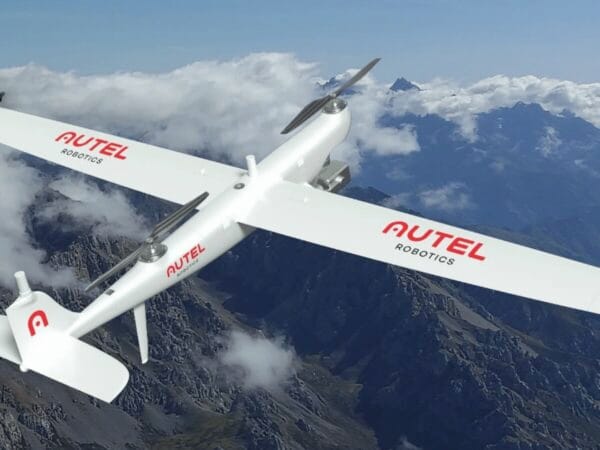
In a perfect world where there are no rules or restrictions, you might be curious about the physical limits of your drone’s flight, rather than the legal ones. So, let’s look at just how high can drones fly in such a world. Drones with spinning propellers have a physical height limit of about 10 kilometers (33,000 feet).
To understand a drone’s potential, we can look at the Zephyr, a model made by Airbus. This drone reached an impressive height of 70,748 feet and stayed in the air for over two weeks, setting a record for the longest flight ever made by an aircraft. This shows just how powerful drones can be when they have the right equipment.
But if your drone’s maximum range goes beyond 400 feet, make sure you have the proper permission to fly that high. Safety is key: if you lose control of your drone at high altitudes, it could be dangerous to you, other aircraft, or people below. It’s also important to understand a drone’s absolute ceiling. This is the highest point it can reach before it can’t fly any higher and levels off.
Why does this happen? As you go higher into the sky, the air gets thinner. This means there’s less air for the propellers to push against, making it harder for the drone to stay afloat. It’s a fight against the thinning air.
However, this behavior is risky and shouldn’t be tested. It’s always best to fly within the legal height limits set by your local rules. Remember: safety first!
When thinking about how high drones can fly, there are three important things to keep in mind:
Absolute Ceiling: This is the highest height at which a drone can stay level in the air. It’s the point where the force from the engines equals the drag, which stops the drone from climbing further. This height is too risky to test, and drone manufacturers don’t usually specify it.
Max Service Ceiling Above Sea Level: Also called the maximum takeoff altitude, this is the highest height at which a drone can still fly, but at a much slower rate—about 100 feet per minute. Drone makers like DJI use this number to recommend the highest point you should fly a drone.
Maximum Range: If the drone’s signal range is shorter than its ability to fly higher, the maximum height will be limited by the signal’s range. This means the drone can only go as high as it can still maintain a strong connection with its controller.
So, while drones can soar high in the sky, their physical limits are determined by many factors, including air conditions, technology, and safety concerns. Always fly smart and stay within the boundaries!
Wondering how high can drones fly? Let’s look at the factors that help drones reach greater altitudes and soar through the skies.
The first factor is the drone’s design and technology. The size and shape of the drone, how powerful its motors are, and how well its propellers work all impact how high does a drone fly. Drones with smooth, aerodynamic designs, strong motors, and sharp propellers are able to lift off higher. New technology, like altitude control systems and GPS, help the drone stay steady and fly higher, giving you more confidence when flying.
Next, let’s talk about battery life and how long your drone can stay in the air. Drones with bigger, more efficient batteries can fly longer and reach higher altitudes. Drones with longer flight times have larger batteries, so they have the energy needed to climb higher before coming back down to recharge.
Another important factor is weight. Every drone has a limit on how much weight it can carry. If you attach extra equipment, like a camera, it can make your drone heavier, which means it might not be able to fly as high. Finding the right balance between the drone’s weight and its ability to lift off will help you reach the best height.
Drones communicate with the controller through radio signals. The problem is, these signals only work within a certain distance. As your drone flies higher, the signal can weaken, making it harder to control the drone. Most drones can fly a few kilometers, but it’s important to remember that flying at great altitudes might limit the signal range.
Finally, the environment can impact how high you can fly a drone. Things like temperature, air pressure, humidity, and wind can change the way your drone flies. Warm temperatures and high humidity can make the air less dense, affecting how well your drone can lift. Also, at higher altitudes, lower air pressure can make it harder for drones to stay stable. Wind gusts and turbulence can make flying higher more challenging, too.
When flying at higher altitudes, some important features help a drone fly higher. These include:
The strength of the signal from your controller also impacts how high a drone can fly. As the drone flies higher, the signal can get weaker, making it harder to control. However, advanced drones with stronger signals can help maintain control at higher altitudes.
Flying in mountain areas can also make how high drones fly harder. The signal might bounce or get interrupted, and the wind might change directions, making the drone harder to control. If you’re flying in mountains, it’s important to understand the winds and changes in air pressure to keep the drone flying safely.
Flying your drone within legal altitude limits is essential for safety and following the rules. Here are some simple ways to help you keep your drone at the right height:
Modern drones come with built-in altitude limiters that prevent you from flying too high. To use these features:
Learn Your Drone Settings: Take some time to explore your drone’s settings and understand how to turn on or adjust the altitude limiters.
Keep Firmware Updated: Make sure your drone’s firmware is always up to date. Manufacturers often release updates that improve altitude control features.
Customize Altitude Settings: If your drone allows it, adjust the altitude settings based on where you’re flying and local rules.
It’s important to keep track of your drone’s altitude during the flight. Here’s how you can do it:
Use the Controller Display: Many drone controllers show the real-time altitude. Always watch this display while flying to make sure you’re staying within legal limits.
Mobile Device Apps: Use apps connected to your drone to get a clearer view of the altitude and other important flight data.
Set Altitude Alerts: Some drones allow you to set altitude alerts. These will notify you if you’re getting too close to the maximum altitude limit.
Planning your flight path carefully can help you avoid accidentally flying too high. Here’s how to do it right:
Check the Area: Look around before flying to check for tall buildings, trees, or other things that might require you to adjust your altitude.
Use Mapping Tools: Apps or mapping tools can help you plan your flight path, keeping you aware of the terrain and obstacles.
Follow Local Rules: Always consider local regulations, especially in cities or near airports, as these areas often have special rules for drone flying.
By following these strategies, you can make sure your drone stays within the legal altitude limits, ensuring a safer and more compliant flight.
When considering how high you can fly a drone, various models stand out for their exceptional altitude capabilities. Let’s explore some of the top high-flying drones available in 2025 and their unique features.
The Autel Dragonfish series is engineered for challenging environments. Its high-altitude performance makes it ideal for rugged terrains like mountains.
Its stability and advanced technology ensure efficient functionality even in extreme conditions. This makes the Dragonfish a reliable option for missions in high-altitude areas.
These drones offer advanced GPS, obstacle avoidance, and extended battery life, ensuring performance at extraordinary heights. The Matrice 300 RTK is especially favored for tasks requiring precision in diverse industries.
The DJI Mavic 3 boasts a Hasselblad camera, 46-minute flight time, and compact design, making it ideal for both professional and recreational users.
With a large camera sensor, 40-minute flight time, and wind resistance, the EVO Lite+ is perfect for capturing stunning visuals even in challenging conditions.
The Parrot ANAFI Ai is optimized for commercial use, while the DJI Air 3 is great for enthusiasts, offering dual cameras and intelligent flight modes.
The Autel EVO Nano Plus and DJI Mini 3 are compact and beginner-friendly, making them perfect for those starting their drone journey.
With 360-degree obstacle avoidance, AI-powered features, and thermal imaging, the EVO Max 4T ensures safe and reliable high-altitude performance.
Understanding how high does a drone fly helps you choose the right drone for your needs. While some drones excel in professional tasks like mapping or search and rescue, others are tailored for hobbyists seeking stunning visuals. Always follow local altitude regulations to ensure safe and legal flying.
Drones, when used responsibly, can achieve remarkable heights and provide incredible aerial perspectives. However, it’s crucial to understand the capabilities of your drone and adhere to legal altitude limits, typically set at 400 feet in most countries. Exceeding this limit without proper authorization not only violates regulations but can also result in legal consequences.
Remember, just because a drone can reach higher altitudes doesn’t mean it’s always safe to do so. Factors like atmospheric pressure, wind conditions, temperature, and the quality of your drone’s equipment significantly impact flight safety.
Whether you’re flying for fun or professional purposes, always prioritize safety and compliance. If your operation requires exceeding the 400-foot limit, ensure you obtain the necessary permissions. By staying informed and following regulations, you can enjoy flying your drone while avoiding unnecessary risks and complications.
Yes, some drones, especially high-end commercial models, can technically reach 20,000 feet. However, most consumer drones are limited to much lower altitudes by regulations. Even if your drone can fly that high, laws in many countries restrict drones to a maximum altitude of 400 feet to ensure airspace safety. Always check the manufacturer’s specifications and abide by local laws.
No, consumer or commercial drones typically cannot reach 40,000 feet, as this altitude is reserved for specialized military drones or research purposes. Military drones are designed to operate at high altitudes, often exceeding 50,000 feet, but consumer drones are limited by their design and legal restrictions. Most drones operate best within lower altitude ranges to maintain control and safety.
In most countries, including the United States, drones are not allowed to fly above 400 feet without special authorization. This rule is enforced to avoid conflicts with manned aircraft. Exceptions may apply if the operator receives a waiver or if the flight is conducted in controlled airspace under approved conditions. Always follow local rules to ensure safe and legal flying.
Drones measure altitude using sensors like altimeters and GPS. Barometric altimeters detect changes in air pressure to calculate height above ground level. Some advanced drones also use GPS signals or radar to improve accuracy. These systems work together to provide reliable altitude data, ensuring precise flight control and safety.
The ideal altitude depends on the purpose of the flight. For photography and videography, 100-200 feet often provides stunning shots with great detail. For tasks like mapping or surveying, drones may need to fly higher, around 300-400 feet, to cover more ground efficiently. Always stay within legal limits and adjust altitude based on your needs.
How high a drone can fly depends on its battery life, design, and legal restrictions. Consumer drones can often reach heights of several thousand feet, but regulations typically cap them at 400 feet. Professional drones or specialized models may achieve higher altitudes under specific conditions, but battery life and signal strength must always be considered.
At 400 feet, drones provide breathtaking views of landscapes, buildings, and other surroundings. You can capture wide-angle shots, aerial panoramas, and top-down images that highlight details and scale. This height is ideal for creative photography or inspections while staying within legal limits. Always respect privacy and fly responsibly.
Yes, drones can operate at Everest Base Camp, but altitude and weather pose challenges. The base camp sits at about 17,600 feet, and many drones may struggle with reduced air density and shorter battery life. Special high-altitude drones with powerful motors and batteries are better suited for these conditions. Ensure you have the necessary permissions before flying in such areas.
Flying a drone too high can lead to several risks, including signal loss, reduced battery life, and legal penalties. Drones may lose connection with their controllers, causing them to drift or crash. Additionally, exceeding altitude limits can result in fines or confiscation of your drone. Always monitor your altitude and follow local regulations.
In the UAE, drones can legally fly up to 400 feet (120 meters). This rule is set to ensure airspace safety and prevent conflicts with aircraft. Always maintain a line of sight with your drone and avoid restricted zones like airports or military areas. Following these guidelines ensures safe and legal drone operations.

Drone Inspection Guide: How UAV Inspection Is Used Today Drone inspection technology is now widely used across industries where routine
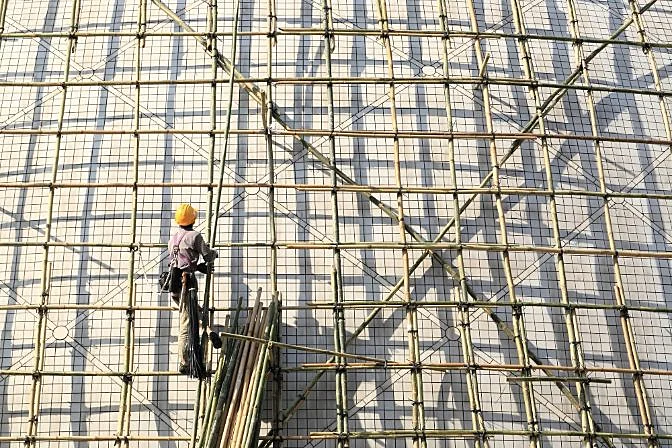
Scaffolding is a temporary structure used in building construction to support workers, tools, and materials while work takes place at